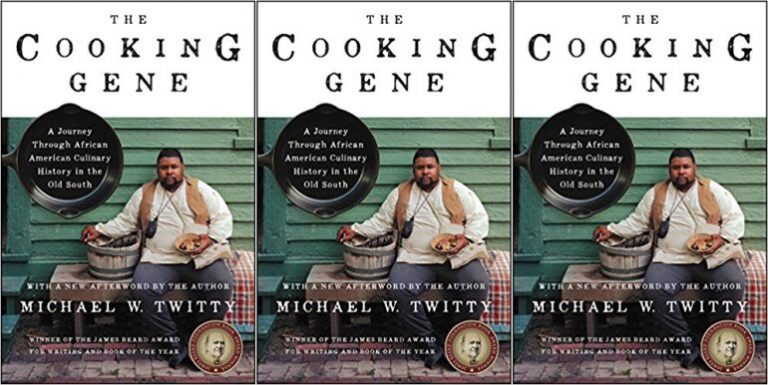Our Lady of the Floss

On a winter Sunday in 1842, twenty-three-year-old Mary Ann Evans, years away from the creation of her authorial alter ego, George Eliot, told her father she would no longer be attending church. Robert Evans’s disapproval was so strong that Eliot eventually capitulated and returned to church, worshiping in body if not in spirit until her father’s death nine years later. This quietly fraught incident of religious doubt in conflict with conventional piety forms a useful framework for understanding Eliot’s reputation as one of the great moral novelists of the nineteenth century. Preoccupied with morality outside of Christianity, her novels combine deeply empathetic portraits of religious devotion with an equally perceptive understanding of the hollow piety that often accompanies it. Eliot’s unbelief never precludes her from making use of resonant religious imagery—a principle deftly demonstrated in her 1860 novel The Mill on the Floss. Fictional saints, divine visions, and otherworldly miracles become a way to reconfigure her disgraced protagonist Maggie Tulliver as a heroic figure and reveal Eliot’s conception of humanistic virtue rooted in emotion.
The iconography that this reshaping hinges on is hidden twelve chapters into the novel’s first volume, slotted into a lengthy passage on the history and habits of St. Ogg’s, the fictional Lincolnshire town where the novel takes place. Ogg, the town’s namesake, is a ferryman on the river Floss who is confronted on a stormy night by a ragged woman who “craved to be rowed across the river.” Ogg urges the woman to be “wise, and not foolish,” but eventually gives in to her demands and rows the woman across. On the other side of the Floss, the woman transforms into the Virgin Mary, who praises Ogg, telling him that “thou art blessed. . . thou didst not question and wrangle with the heart’s need.”
At first appearing to be a rather standard pastiche of early legends of sainthood, the story of St. Ogg is noteworthy in its focus on earthly need and desire—qualities rarely given approval in pious literature, particularly when those qualities are attached to a woman. Ogg dismisses the woman’s request as nonsensical, and the arc of his conversion from condescension to belief and respect relies on his ability to recognize the legitimacy of his passenger’s want. When she reveals himself to him, the Virgin never offers a justification or higher purpose for her desire to cross the river. Her “heart’s need”—her longing and the feelings that spring from it—are reason enough.
Maggie Tulliver, Eliot’s protagonist, is, like the Virgin, defined by deep desire and sensibility, which she wrestles with for the bulk of The Mill on the Floss. Introduced as a grubby, adventurous preteen “wanderin’ up an’ down by the water, like a wild thing,” Maggie is a dissatisfaction to herself and others. Her relatives bemoan her mischievousness and untidy appearance, not to mention her outspokenness and sly intelligence. Maggie’s natural gifts in Latin, mathematics, and other academic pursuits are dismissed as “a great deal of superficial cleverness,” showing nothing beyond a “quick and shallow” personality. Like every other desire Maggie expresses during the novel, her aptitude and interest in learning is quashed, and the passion that motivates her is condemned as proof of an uncontrollable and undisciplined spirit.
Rather than resist the attempts of her family and friends to curb and control her behavior, Maggie spends much of her life struggling to transform herself and mold her feelings into an acceptable pattern of placid Victorian femininity. As a teenager, she dabbles in self-denial, “still panting for happiness” and funneling her frustrated energies into a futile attempt at reinvention. While Maggie longs to check her impulses and please her loved ones, the deep wells of feeling she relies on to govern her decisions and friendships mean that her efforts are doomed to failure. Eliot movingly demonstrates how her sensibility, an immutable part of her nature, alienates her from the staid and conventional society of St. Ogg’s.
Tom, Maggie’s beloved older brother, embodies this conventionality, and, as the novel’s stand-in for St. Ogg, presents the greatest obstacle to his sister’s happiness. As practical as Maggie is imaginative, he lacks the empathy that would allow him to understand and commiserate with her struggles as a passionate, volatile young woman. Tom’s inability to sympathize with Maggie doesn’t spring from bad nature or spite; a hardworking young man with stores of self-control almost as great as his sister’s deep feeling, he is ill-equipped to understand anyone who struggles with the composure that comes easily to him, much less the sister who he condemns as having “no consistency” in her. While his disapproval often springs from genuine love for Maggie and their family, this displeasure still has a significant impact on her. Maggie keenly feels Tom’s distaste for her emotional nature, in large part because of the close bond between the siblings.
Tom’s rejections of Maggie’s passionate nature, and her attempts to reconcile with him, form the novel’s emotional core. A rift develops between the siblings when Maggie strikes up a secret friendship with Philip Wakem, the disabled son of the lawyer who bankrupted her father. When Tom demands that Maggie stop meeting with Philip, she defends the impulses that led to the friendship, declaring, “I have feelings that you would be the better for, if you had them.” Although she agrees to abandon Philip, her defense of her emotionality is a turning point that decisively sets her at odds with Tom and the society he represents.
Maggie only mends her relationship with Tom after experiencing more censure and tragedy. After she is manipulated into a compromising position by her cousin’s suitor, she returns to St. Ogg’s to face a ruined reputation and Tom’s fury. Telling her that she is “base, deceitful” with “no motives strong enough to restrain you,” he throws Maggie out of their childhood home. Like the Virgin, Maggie is forced to contend with scorn and censure because of her desirous and impulsive nature.
The parallels between the Tulliver siblings and the story of St. Ogg become important at the novel’s resolution, which makes use of the legend to allow Maggie a legitimacy and redemption her society denies her. As a disastrous flood engulfs the town, Maggie rows to rescue Tom. When he realizes that his sister has come to save him, Tom’s mind is opened to a “new revelation . . . of the depths in life that had lain beyond his vision.” The two stare at each other, Maggie “with eyes of intense life” and Tom silenced by “awe and humiliation.” The scene mirrors the legend, with a determined man confronted and silenced by a woman. Like the Virgin revealing her heart’s need to St. Ogg, Maggie is able to finally impress on Tom the value and virtue inherent in the deep feeling he has always condemned.
Eliot’s penchant for realism, and her knowledge of the excruciating price society demands for difference, doesn’t allow the siblings the same happy ending she gives St. Ogg. Tom and Maggie are unable to cross the river and, instead, drown in each other’s arms. Still, Tom’s forgiveness and understanding of Maggie’s true value is tentatively shared by the community, who seem to approve of her sacrifice: the siblings’ shared tombstone reads: “In their death they were not divided.”
Maggie’s end may not seem particularly triumphant, but seen next to St Ogg’s story, it takes on an unexpected poignancy and radicalism. Maggie’s rescue of Tom is rooted in her emotional, feeling nature, and by aligning her with the Virgin in the book’s closing passages, Eliot not only vindicates female emotion, she also shows it to be a quality divine in its ability to empathize, forgive, and sacrifice. Never losing sight of the sensibilities that make Maggie fallibly, achingly human, she also venerates her heroine’s passions and feelings, suggesting that the path to virtue may not lie in rigidity and conventional moralism, but in the volatile, messy outpourings of the human heart.
This piece was originally published on June 17, 2020.


